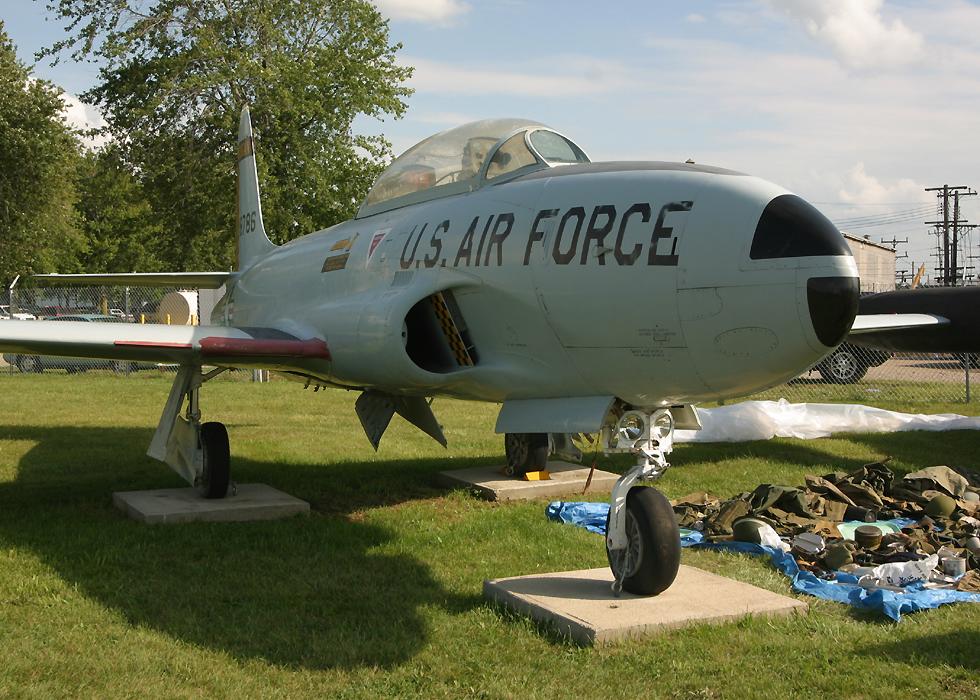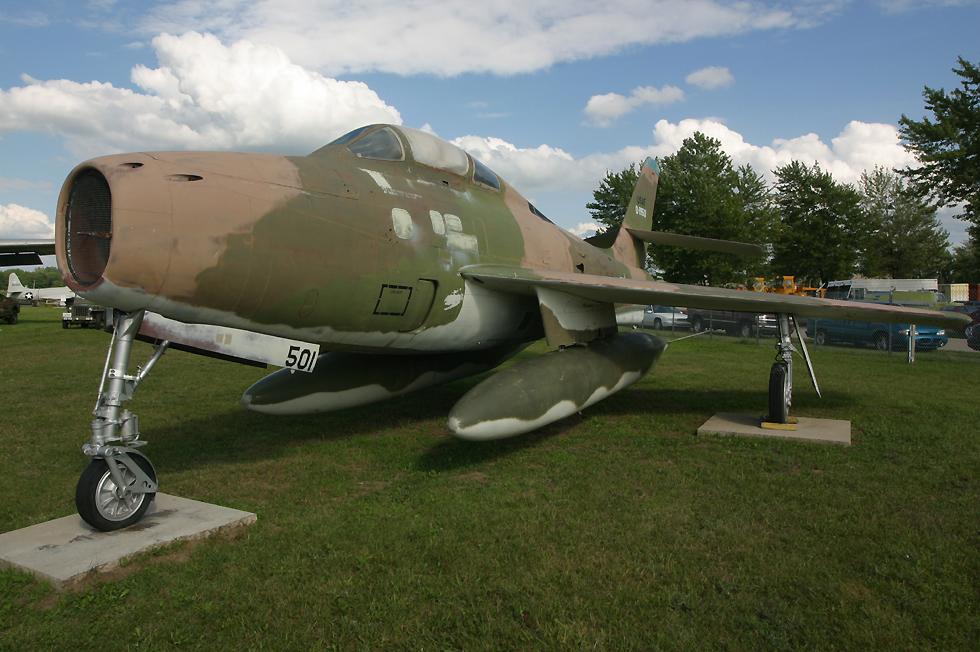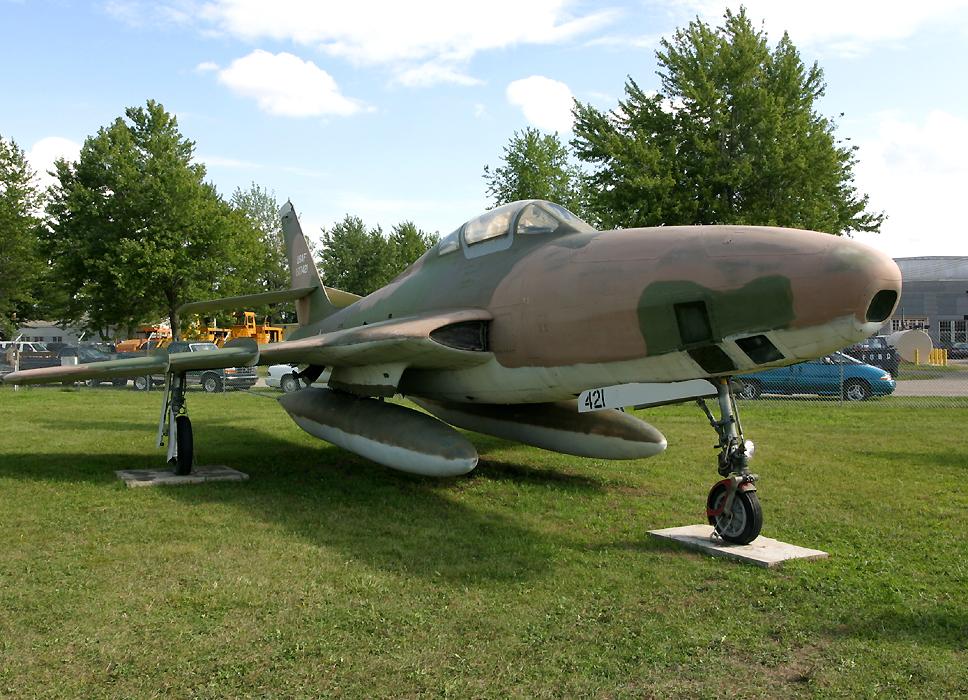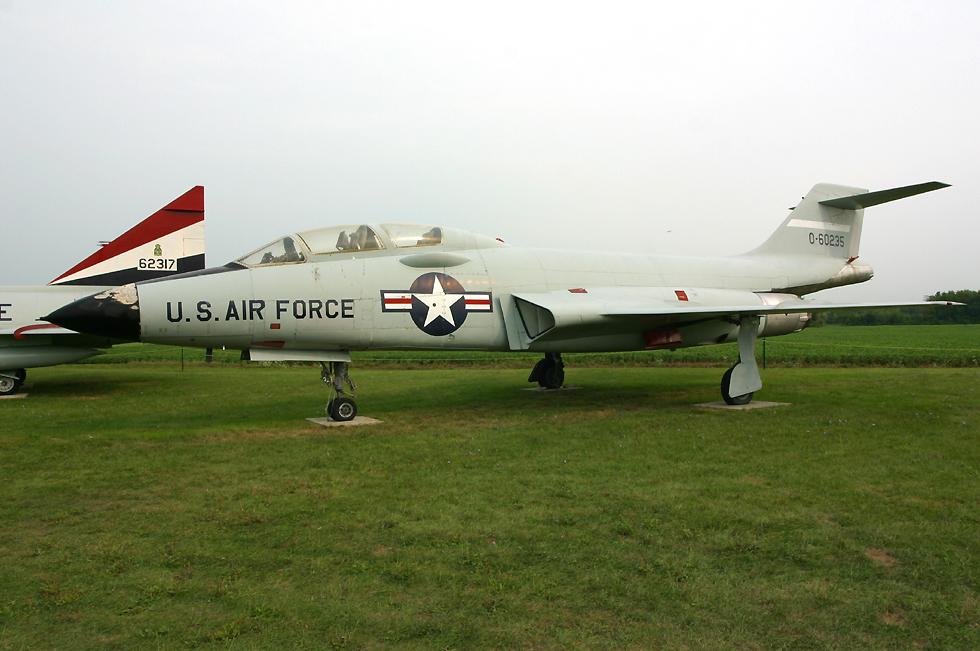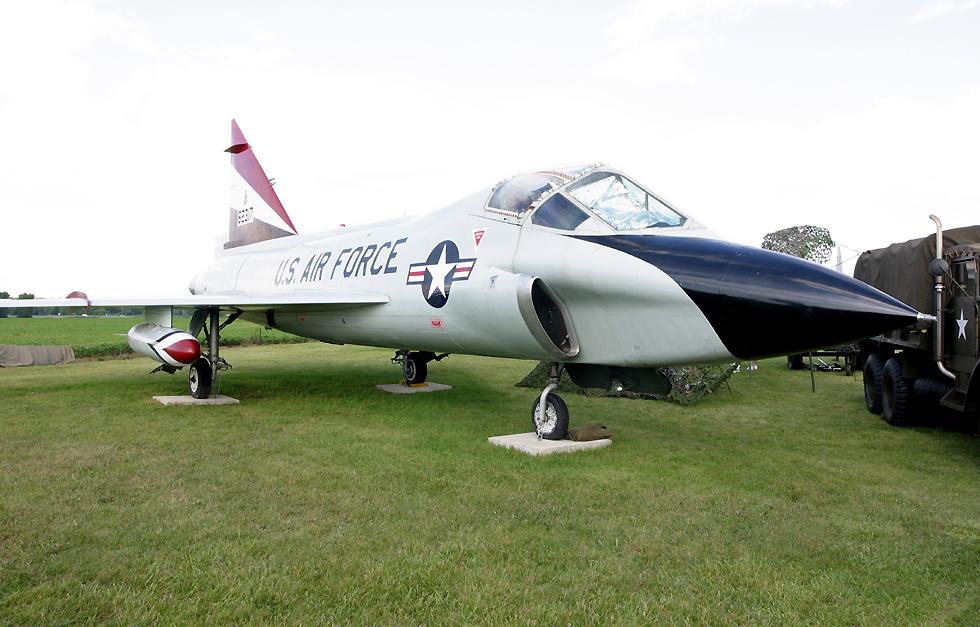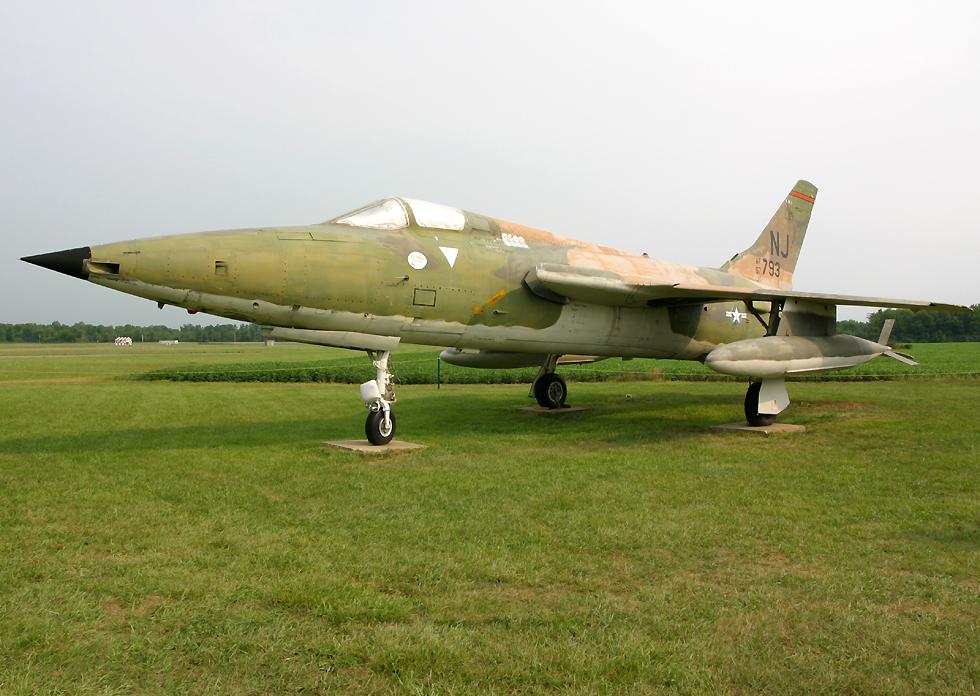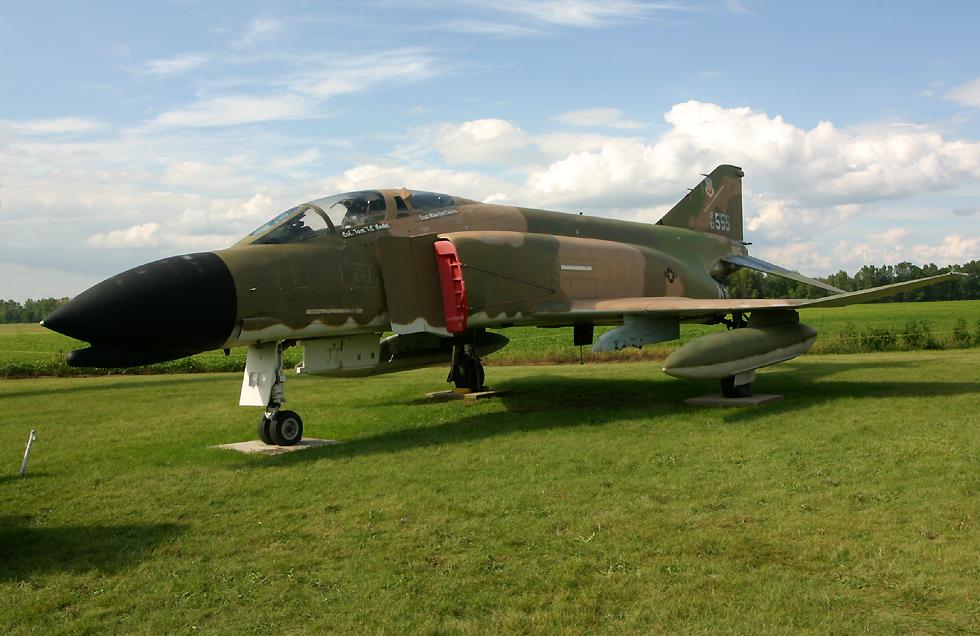Fighter Aircraft at the Yankee Air Museum
|
This is the F-80's replacement in Korea, an F-86 Sabre. People familiar with this type might do a double-take when they see this aircraft, since it looks significantly different than a regular F-86, such as the one I captured flying at the Oshkosh airshow in 2002. That's because this is an F-86L "Sabre Dog", a variant which was built to attack bombers rather than the usual fighter foes. |
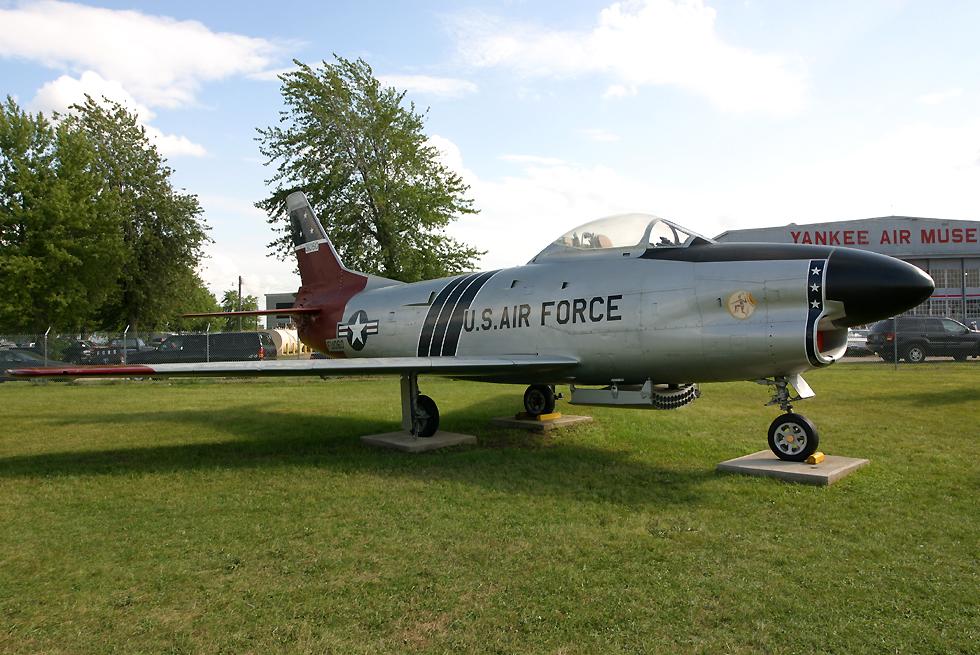 |
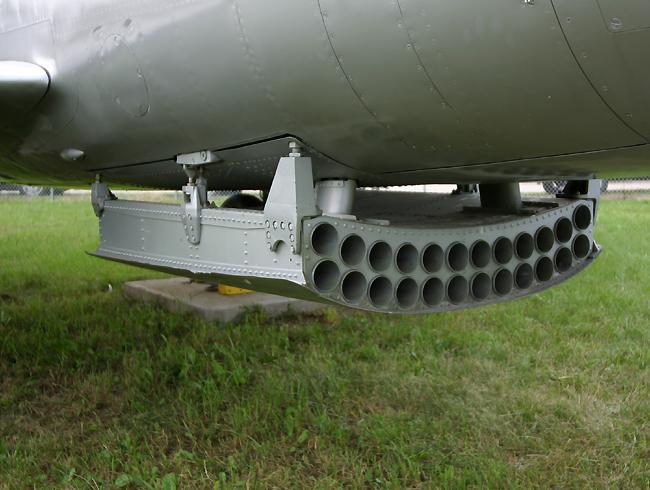
If you take a look under the fuselage of the Sabre Dog, you'll see this rather crude looking structure, which is a retractable attachment designed to hold 24 air-to-air rockets for shooting down Soviet bombers. |
|
Although they achieved remarkable feats once they were in service, the Century Series aircraft were very difficult to develop and things didn't always go smoothly. Many test pilots died while testing the new concepts, resulting in an elite class of aviators with The Right Stuff who went on to become America's first astronauts. Although the F-102 had several features intended to give it great speed, such as ultra-thin wings, it was not a particularly fast aircraft by the standards of Century Series aircraft. It had a maximum speed of 810 miles per hour, compared to the previously mentioned 1207 miles per hour of the F-101 Voodoo, the 1387 miles per hour of the F-105 Thunderchief, and the 1404 miles per hour of the F-104 Starfighter. However, the F-102 was later redeveloped into the F-106 Delta Dart which, despite having a very similar appearance, had a more powerful engine and was capable of a very respectable 1525 miles per hour, mostly because of the application of the "area rule" of aerodynamics, which led to the fuselage being redesigned to look somewhat more like a coke bottle than the F-102's straight fuselage. |
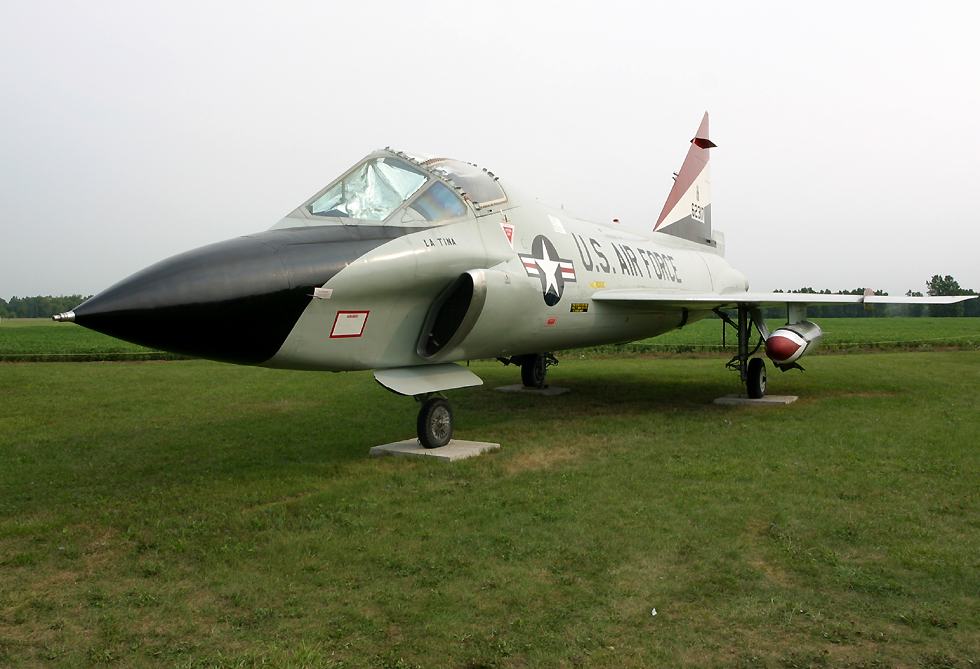 |
